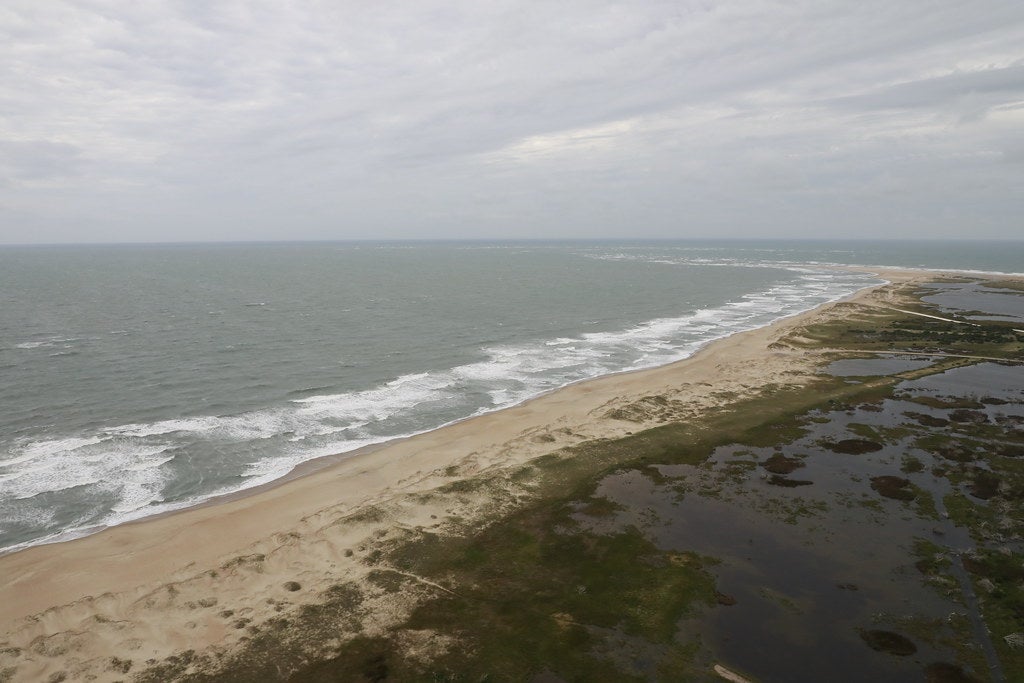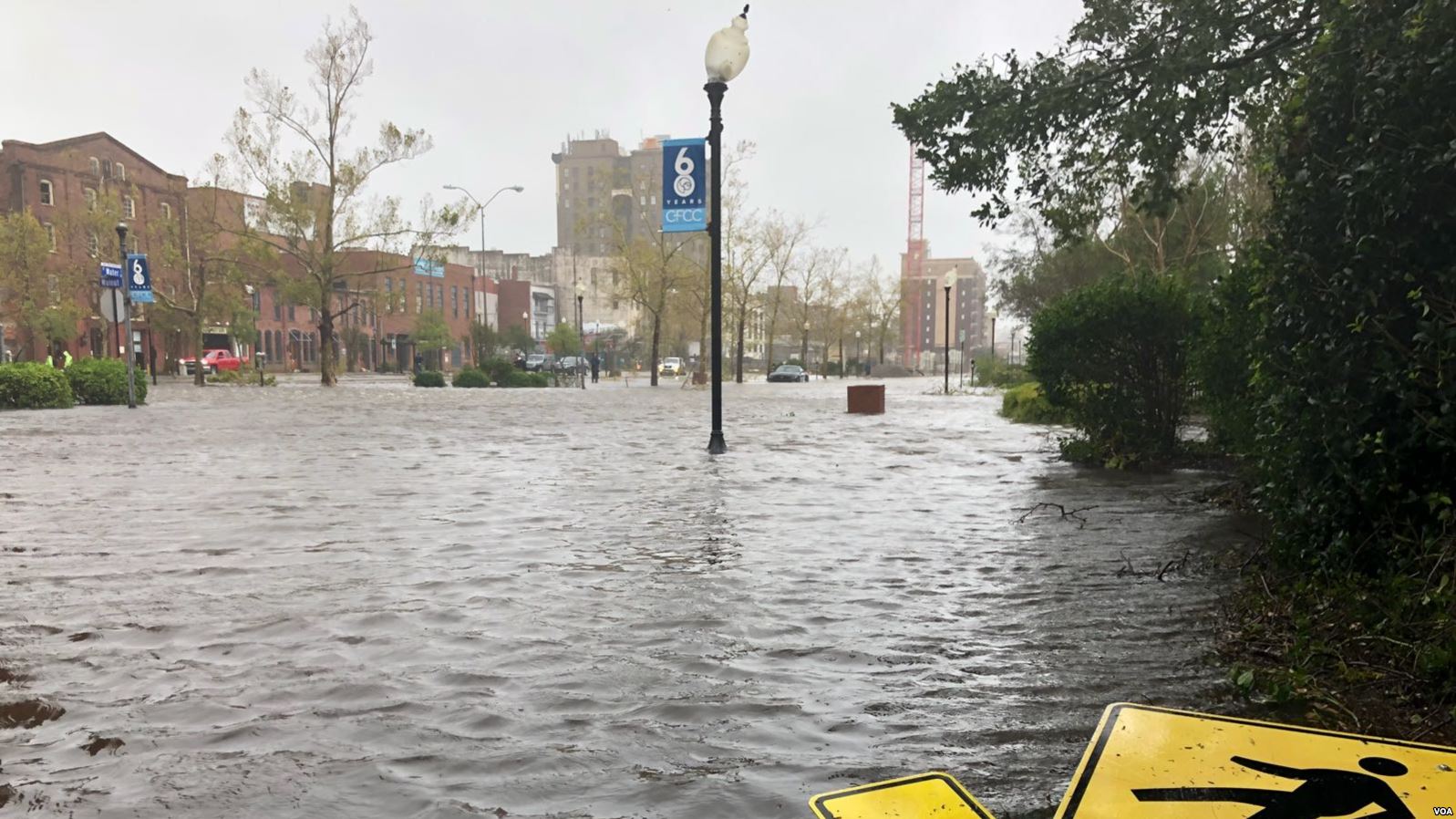North Carolina confronts climate change with forthcoming resilience plan
Update: North Carolina Governor Roy Cooper released the state’s first Climate Risk Assessment and Resilience Plan on June 2, 2020. See our statement in response here.
Earlier this month, Tropical Storm Arthur brushed by North Carolina’s Outer Banks two weeks before the official start of hurricane season and in the midst of the coronavirus pandemic. While damage was minimal, the storm was an urgent reminder of the state’s need to build climate resilience.
As North Carolina recovers from a slate of recent hurricanes, state officials are moving quickly to build resilience ahead of future storms. Gov. Cooper is expected to release the state’s first resilience plan in early June, providing a framework that will help the state move quickly toward a more resilient future.
This plan will build on the governor’s Executive Order 80, an initiative aimed at reducing carbon emissions and preparing the state for a changing climate. Through that effort, North Carolina Institute for Climate Studies released a report that projected more frequent extreme weather, including hurricanes, flooding from increased rainfall and even drought.
To protect the state’s people, economy and ecosystems, North Carolina must lead on climate mitigation while rapidly accelerating efforts to make our communities and landscapes more resilient.
Here are four strategies that can help North Carolina build meaningful resilience:
1. Set a clear vision
North Carolina must guide its efforts with a set of shared objectives that build broad support and direct state resources and align actions with business investments, workforce training and regional planning. In developing resilience policies and programs, leaders should consider:
- Prioritizing funding and policies that reduce the impacts of climate change, including flooding, drought and wildfires.
- Distributing the benefits and costs of resilience actions equitably to create safer, connected communities.
- Investing in regional economies by supporting agriculture, the military and entrepreneurial opportunities, especially in rural towns and cities.
- Supporting healthy communities, local identity and recreational access to nature.

2. Make latest science accessible
North Carolina has been a national leader in modeling flood risks risks (i.e., Flood Inundation Mapping and Alert Network, Flood Risk Information System). We must continue to invest in flood risk reduction modeling and begin to invest in expanded modeling to incorporate additional climate risks (i.e., drought, fire) and identify potential resilience solutions.
Building on the Climate Science Report on growing climate threats the state should redouble modeling to develop readily accessible data on risks and solutions.
Researchers can enhance these models by integrating climate science and producing solutions-focused maps and models to serve as critical sources of information for local governments, communities and rural landowners and farmers.
3. Build community capacity and engagement
Communities and landowners must have access to actionable science to understand their risks and potential benefits of resilience measures. At the same time, government leaders must build capacity and provide collaborative processes to transform information about risks and vulnerability into local solutions. The recent release of North Carolina’s Natural Hazards Resilience: A Quick Start Guide for North Carolina Communities builds on other coastal resilience guides and provides a great model for engaging communities and stakeholders in building a more resilient future.
From this foundation, North Carolina can increase community capacity to generate support and make connections across regions and sectors. Through effective engagement, farmers can increase the resilience of their own agricultural operations while also envisioning themselves as part of the solution for reducing flooding to downstream communities. Leaders must hear all voices, so community solutions become more just and equitable. Gov. Cooper’s Executive Order 80 and the forthcoming Resilience Plan are essential first steps toward a more resilient North Carolina. Share on X
4. Use policy to advance effective natural solutions
North Carolina is facing a new normal of extreme weather, which requires a reevaluation of state and local policies through a new climate lens. This work will take time and many conversations among diverse interests within our state, but this work is vital to advancing climate resilience.
One near-term action legislators can take to reduce flood vulnerability is to authorize the North Carolina Division of Mitigation Services to use its highly-efficient contracting program to engage the private restoration industry to deliver cost-effective, nature-based flood storage measures, such as wetland, floodplain and stream restoration. This authorization would create a first-in-the-nation marketplace for flood reduction projects. It would also demonstrate the potential for state policy to spur local, private investment to solve community flooding concerns while also rewarding agricultural landowners for being part of the solution.
Moving resilience forward
With the start of another hurricane season and as the state continues recovery, Gov. Cooper’s Executive Order 80 and the forthcoming resilience plan are essential first steps toward a more resilient North Carolina. Going forward, all parties involved, from agency and business leaders to community members and farmers, can contribute to this future.












2 Comments
In this summary, I see no bullets around the psycho-social-spiritual impacts of climate disruption. I good reference for this is “Transformational Resilience” by Bob Doppelt. Is NC going to include these impacts inter planning?
The Plan does recognize the significant mental and psychological impacts that climate-induced storms and hurricanes are having on the residents of NC, especially those from our most vulnerable and disadvantaged communities. The Plan was developed to identify actions the state’s agencies can take to reduce those impacts, both physical and psychological. However, your comment does expose a weak point in the plan, the lack of detailed recommendations to support the psychological and mental health of NC’s citizens.